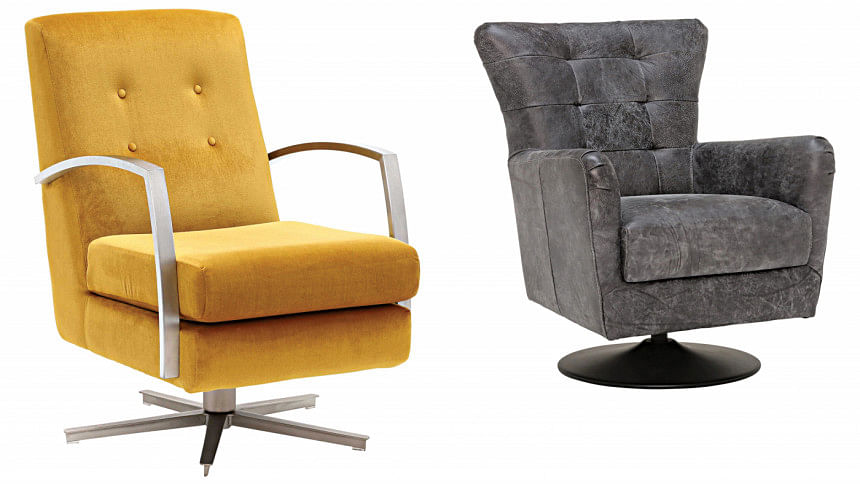The revolutionary history of the Swivel Chair

Be it in office boardrooms, workplaces or even our own bedrooms with our gadgets and computers/laptops, there is one common denominator we are bound to find in all three — the swivel chair, more commonly known as the revolving chair.
With a single central leg with round wheels at its base, the chair allows easy hand rotation of 360 degrees to the left and right, helping to recline in the direction of our pleasure. Our modern-day sensibilities also allow for the options of raising or lowering the seat. The swivel chair affirms a sense of comfort when in use, as it is functional, and brings a sense of aesthetic design as its shapes and designs evolve over time.
The swivel chair is conspicuous in almost every major work setting whether it is at home or offices, in a private or public, making it a delightful seat, allowing easy movement by the wheels and the freedom to turn in any direction, synchronising work or any leisurely action.
Behind the comfort and warmth of what seems to always create a degree of buoyancy when working, has a deep-seated taint of revolutionary history attached to it.
The creator of the swivel chair is the great American revolutionary statesman and legislator, Thomas Jefferson, who played an important role in creating the United States of America as we know it. When not busting his brainboxes in creating the nation-state with all its numerous flaws as we see and know today, Jefferson was also a skilled and innovative inventor with an acumen for design.
In a great state of political upheaval and euphoria, Thomas Jefferson, in 1775, had shifted to Philadelphia after becoming a member of the Continental Congress, the convention of delegates who were tasked with creating and planning the structuring of the legal and political framework of the United States of America.
Knowing that he had a lot of paperwork that had to be made in a burst of concentration and energetic impulse, he went for furniture shopping. He needed a suitable writing desk and a perfect fit of a chair to ensure he was comfortable in drafting important documents and could engage in important decision-making, heralding him as one of the most whimsically inventive and articulate political leaders of all time.
Having to do research all by himself with everything scattered here and there, Jefferson wanted to bring a degree of order to his study and therefore his mind, which made its imprint on the quill formulating his ideas on the paper in its final stage.
Wanting to create a mobile chair, the esteemed polymath bought a stationary wooden model of a Windsor chair whose legs he removed alongside the separation of the seat from the back. He then re-joined them with an iron spindle and in getting the chair to spin, he employed the use of casters, designed mainly for use in window sash pulleys. In trying to make the chair more office friendly and mobile, he had changed a rigid English chair with a solid wooden seat pushed into drilled holes into something uniquely American that would be synonymous with the type of nation he was creating.
The chair is deeply intertwined with American history, especially with the writing and documentation of the Declaration of Independence, another of his vaulted achievements. Impressed by its use, he had taken it to his plantation in Monticello in Virginia in 1776. Here, the chair went through another set of modifications as its original legs were replaced with bamboos and a writing surface attached to one of its sides. Rare for its highly remarkable revolving mechanism, the chair has been embedded into modern day corporate life as well as in the rooms of higher echelons of power.
A true Renaissance man, Jefferson had a curiosity and penchant for improving things as often as he saw them. The world can admire him not only as a great statesman, but also an inventor with an unquenching thirst for design and improvement.
Photo: Collected

 For all latest news, follow The Daily Star's Google News channel.
For all latest news, follow The Daily Star's Google News channel. 



Comments